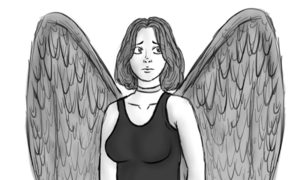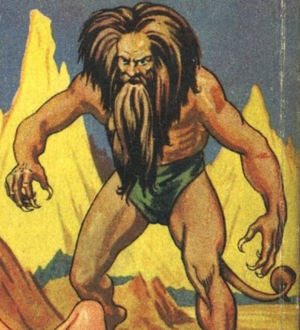Mongons
(WIP)
| Golden/Supreme Men | |
|---|---|
| A Golden Man | |
| Scientific classification | |
| Kingdom: | Atol'ic(Tao'ic)
|
| Phylum: | Mongonoid
|
| Class: | Lumen
|
| Order: | Mongon
|
| Family: | Aureoloth
|
| Genus: | Gildeo
|
| Species: | Golden/Supreme Men
|
| Binomial name | |
| N/A | |
| Hawk/Winged Men | |
|---|---|
| A Hawk (Wo)man. | |
| Scientific classification | |
| Kingdom: | Atol'ic(Tao'ic)
|
| Phylum: | Mongonoid
|
| Class: | Lumen
|
| Order: | Mongon
|
| Family: | Sweoloth
|
| Genus: | Sceon
|
| Species: | Hawk/Winged Men
|
| Binomial name | |
| N/A | |
| Tiger/Striped Men | |
|---|---|
| Scientific classification | |
| Kingdom: | Atol'ic(Tao'ic)
|
| Phylum: | Mongonoid
|
| Class: | Lumen
|
| Order: | Mongon
|
| Family: | Sweoloth
|
| Genus: | Cræftiga
|
| Species: | Tiger/Striped Men
|
| Binomial name | |
| N/A | |
| Lion/Maned Men | |
|---|---|
| A Lion Man | |
| Scientific classification | |
| Kingdom: | Atol'ic(Tao'ic)
|
| Phylum: | Mongonoid
|
| Class: | Lumen
|
| Order: | Mongon
|
| Family: | Sweoloth
|
| Genus: | Cræftiga
|
| Species: | Lion/Striped Men
|
| Binomial name | |
| N/A | |
| Mutt/Yellow Men | |
|---|---|
| Scientific classification | |
| Kingdom: | Atol'ic(Tao'ic)
|
| Phylum: | Mongonoid
|
| Class: | Lumen
|
| Order: | Mongon
|
| Family: | Dóceoloth
|
| Genus: | Pyriteth
|
| Species: | Mutt/Yellow Men
|
| Binomial name | |
| N/A | |
Biology
Consumption
Like most living beings, every Mongon, be it Sweoloth, Dóceoloth, or Aureoloth, requires water to live. However, unlike most species, they do not consume food. Instead they absorb radiation in order to survive. This is generally achieved in one of two ways. The first way, simply absorbing it, is slower and passive. However, it requires no effort on the part of the Mongon, only necessitating that they be in a radioactive environment. The second way, which is achieved by drinking radioactive water, is faster and active. It is far more effective at getting Mongons the radiation they need quickly, though this leads to more waste, but bears little consequence to them.
Life and Span
Mongons reproduce sexually. The result of this is roughly a year of pregnancy for the female, which generally results in the birth of one child, though having more than one child per pregnancy is possible.
Their children are not fat, as human ones are, but are thin and somewhat long creatures. They are practically helpless, more so than even human children, when they are young. It takes around a year before they stand fully upright, and generally around four months past when they first stand to reliably walk. Aureoloth children are the only exception, taking an average of fourteen months to begin standing, but walking within three. Thus Aureoloth children take longer on average overall than Sweoloth and Dóceoloth children in total time, but generally take less time to learn how to walk once they learn to stand. However, the extra time comes from learning to stand, as the Aureoloth are far heavier than their counterparts.
Sweoloth, Dóceoloth, and Aureoloth mothers all nurse their children, like how humans and other mammals do, but unlike mammals they do not produce milk. Instead they produce a fluid known as Lēomena. Lēomena is an extremely radioactive fluid which is made in large part of water, and is produced within the female, thus requiring them to absorb far more radiation than usual when nursing. Young Mongons can absorb radiation, but their small size and great need of energy means that without being nursed, they would quickly starve to death. Baby Mongons would require an environment incredibly radioactive, even by Domain standards, to survive off of passively absorbing radiation.
As they develop, Sceon young have their wings properly grow out, while Cræftiga young have their claws turn from being short and blunted to being long and sharp, around the time they are beginning to walk. However, the Sceon wings are generally not used until they are two years old.
Both male and female mongons are able to breed within around eighteen years. However, their bodies do not finish developing physically until an average of twenty years. While they do not grow especially taller than humans, their average ends up higher as they have a far taller short end. No “elderly” exists in a biological sense, with Mongons theoretically having immortality. However, except in the case of the Golden People, none are known to have breached two hundred years old.


